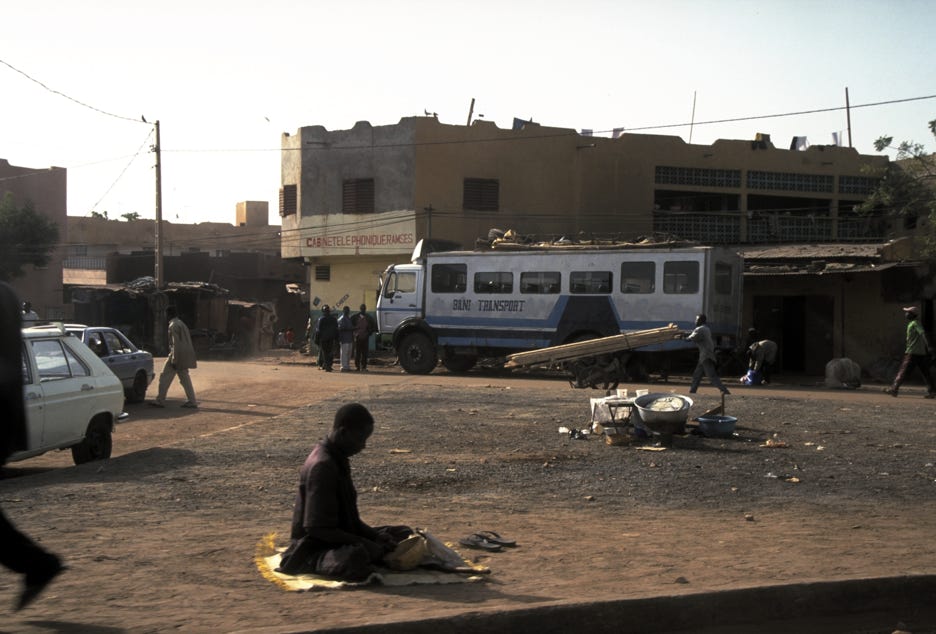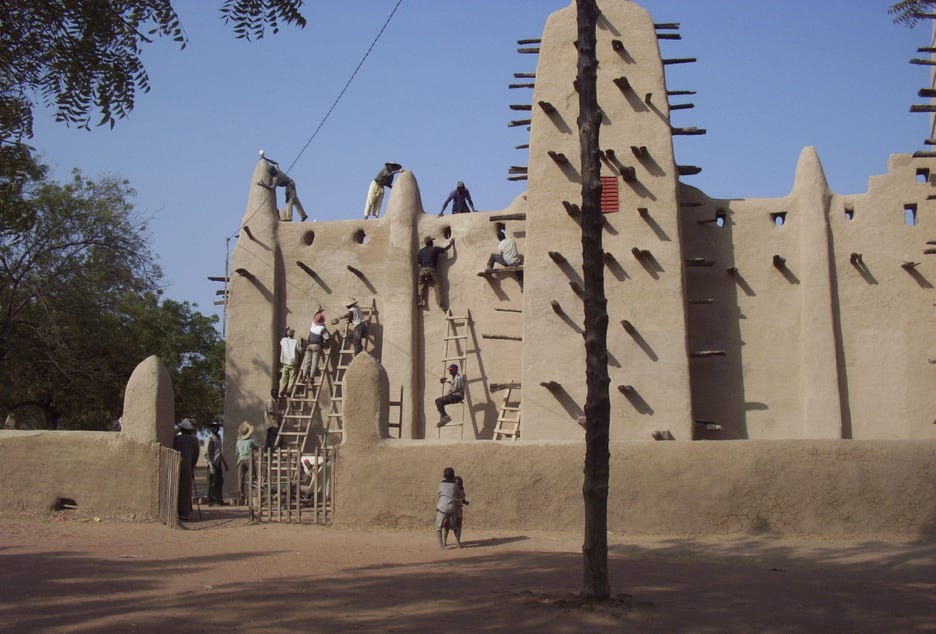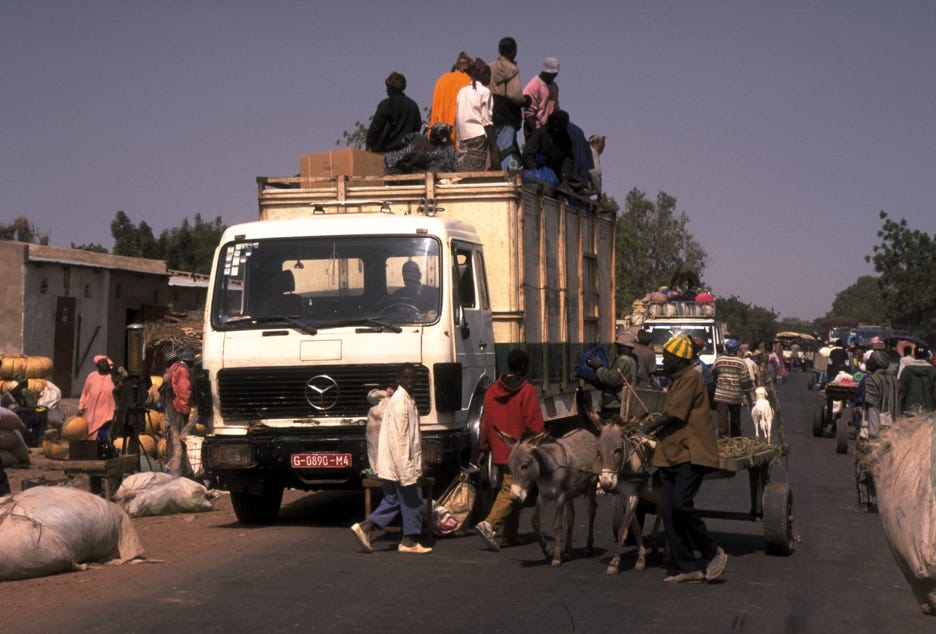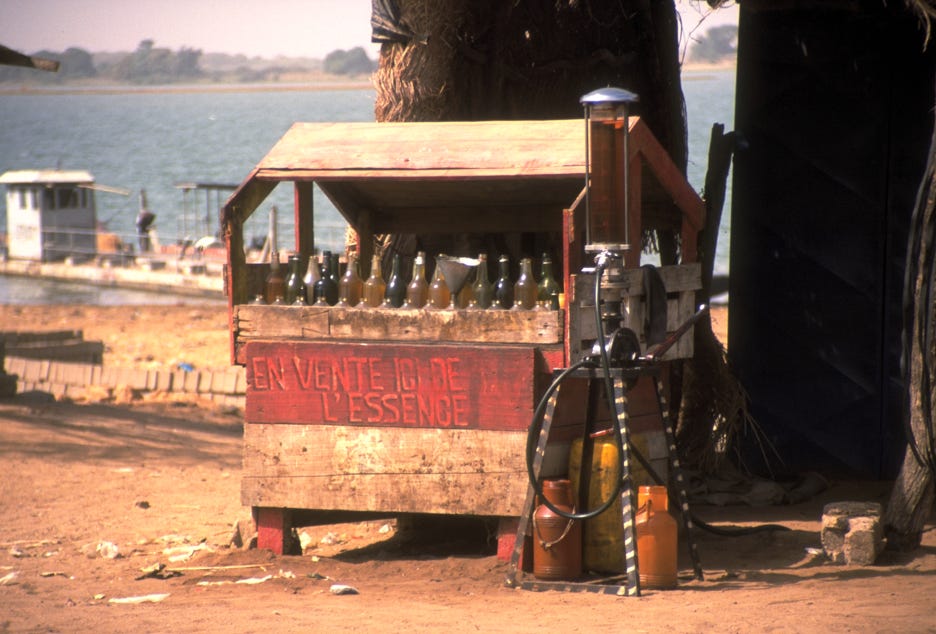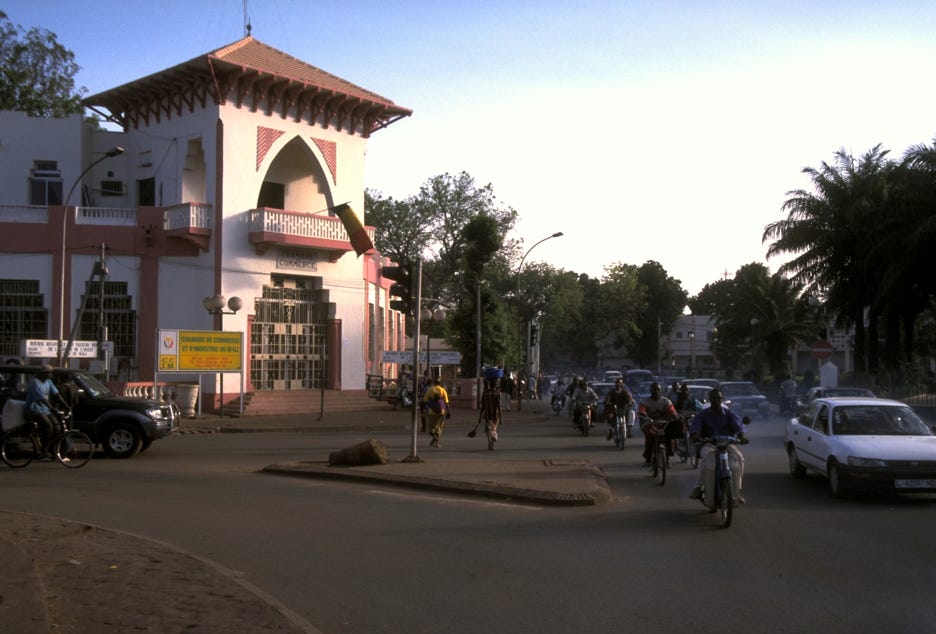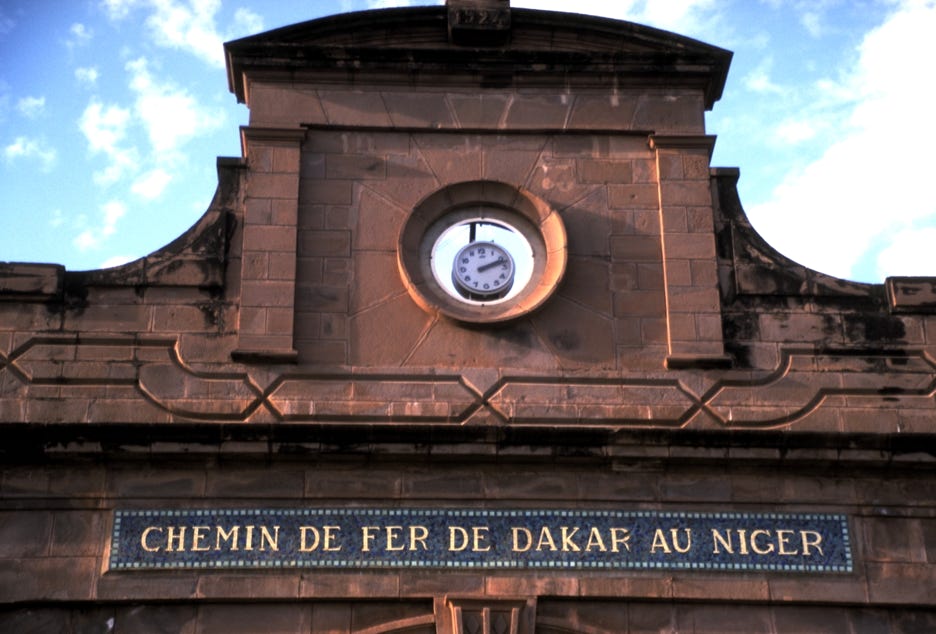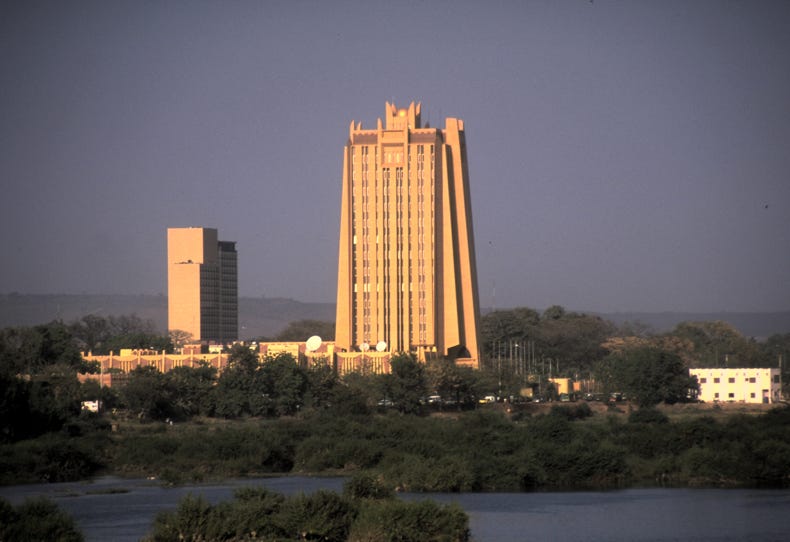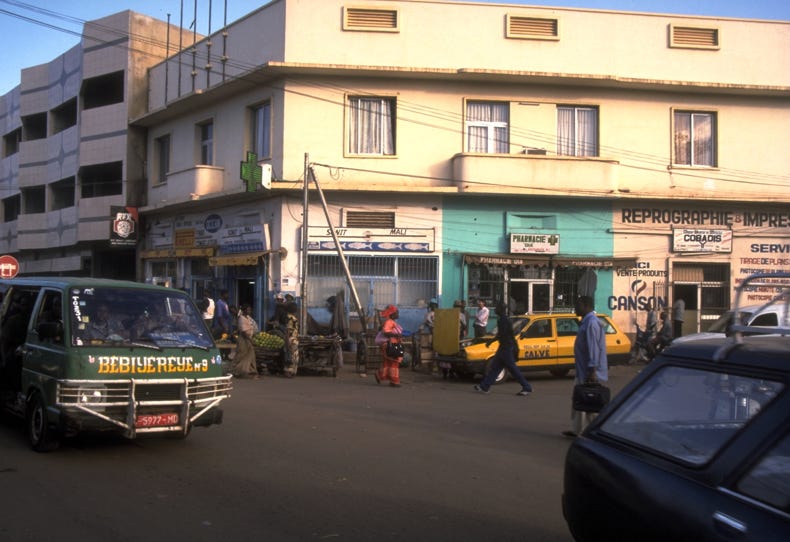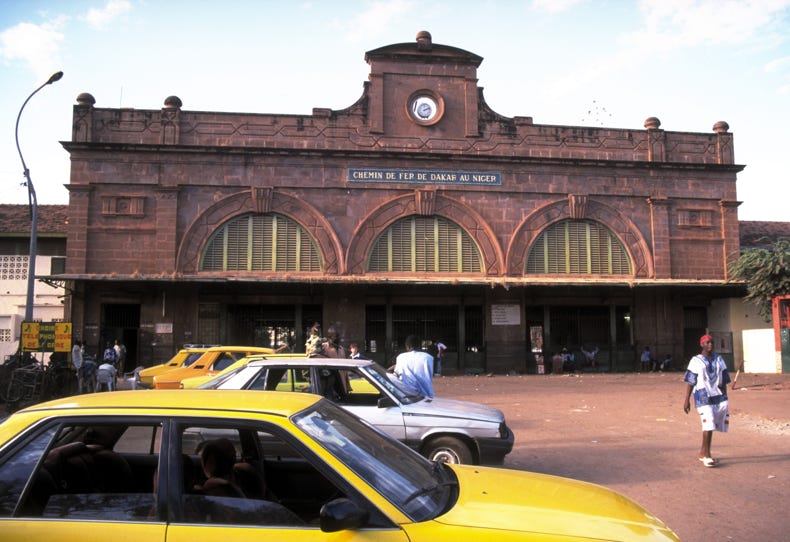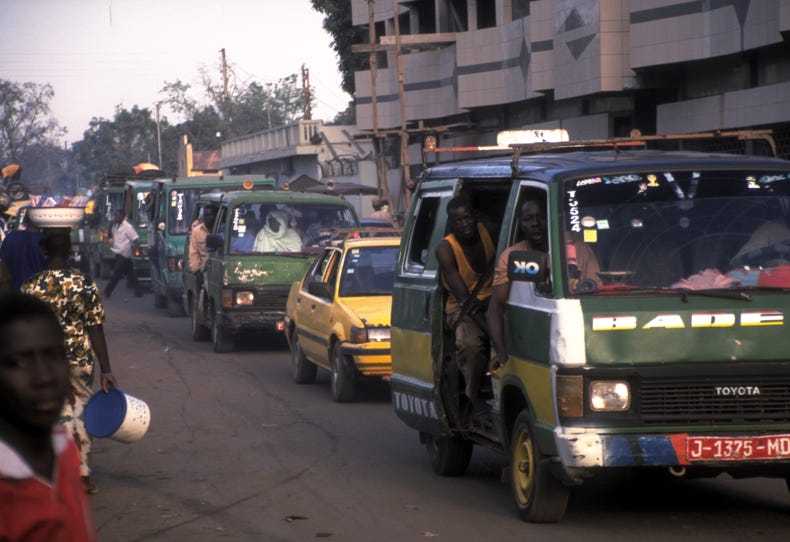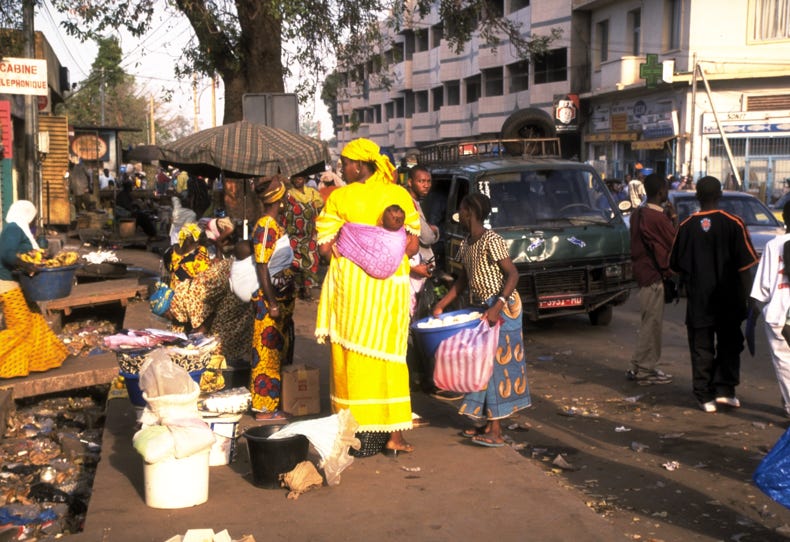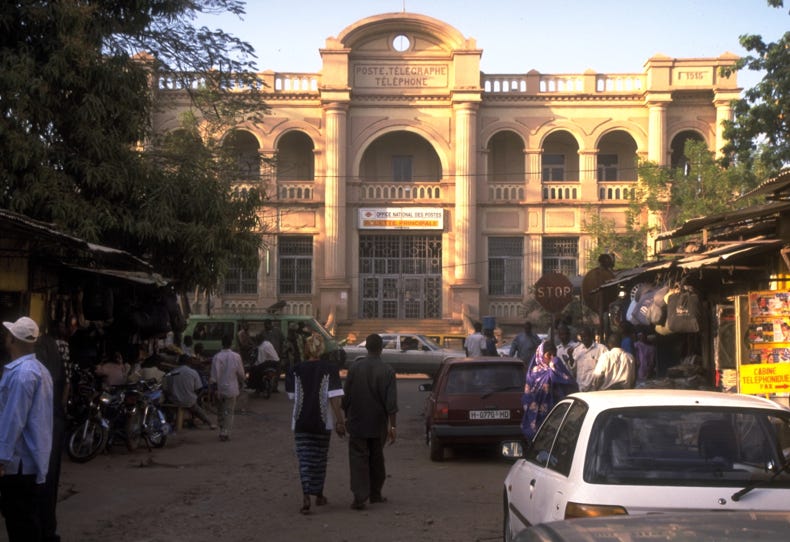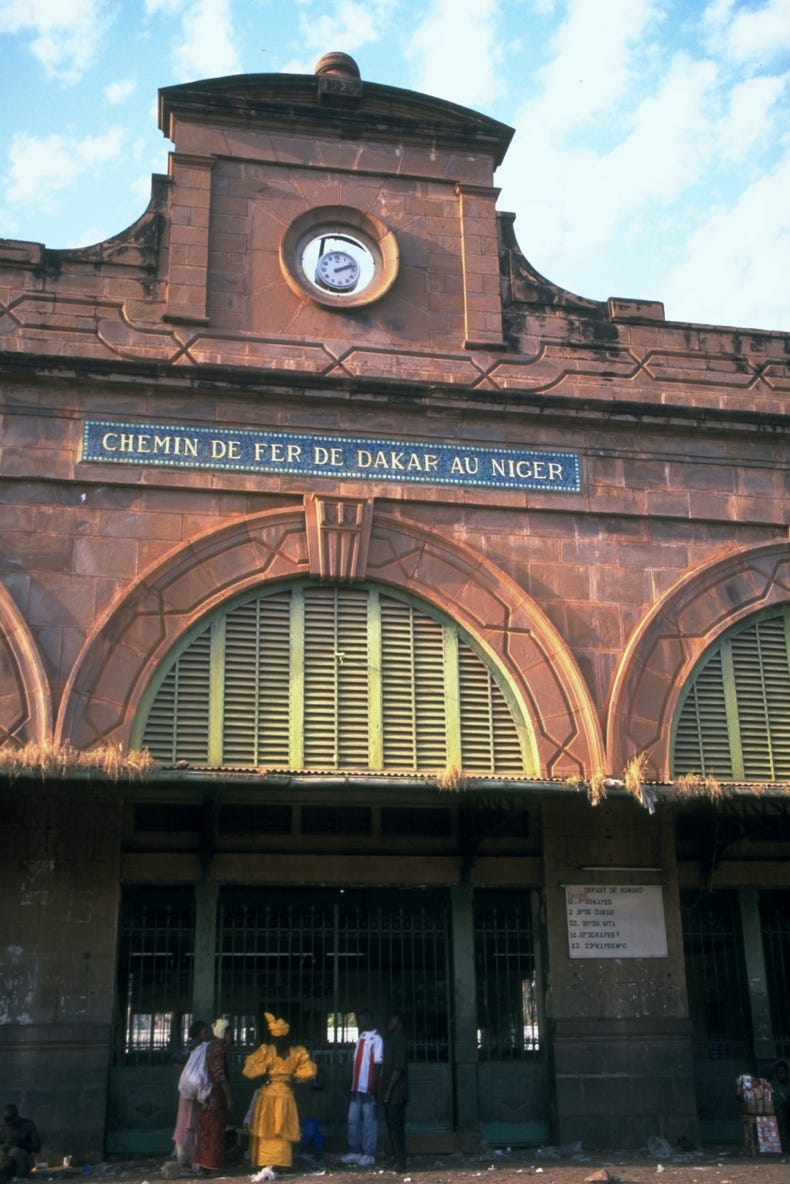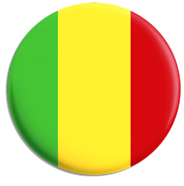

We awoke to the alarm clock as scheduled at 5:30am on Wednesday 21st January. It was great to have hot water again - the hotel in Sangha did have a shower in the room (like all our hotels except one in Mali it was just a shower rose coming out of the wall in the bathroom, i.e. no shower curtain or doors), but with just cold water it was hard to remove all the dust and odours we collected in the Dogon villages we visited. It was also great to have the heavenly French-style bread again for breakfast – crusty but with an inside so light it almost dissolves in the mouth. They have a great boulangerie (bakery) somewhere in Mopti, and the French taught them well.
We left the hotel soon after dawn at 7:00am so we could undertake the long drive back to Bamako – yes, this was to be our last day in Mali, as our flight to Casablanca and on to London was to leave at 3:30 am that night. Although we had seen this section of the country between Mopti and Bamako on our first day here, it was good to re-visit it through the eyes of people who have now spent a week in this great country.
The drive was quintessential Africa – people everywhere walking beside the road (even miles from any village), lines of women carrying firewood on their heads (actually carrying almost any kind of cargo on their heads, and always immaculately presented in brightly coloured clean clothes – how do they do it?), goats and sheep everywhere (no, they don’t have a goat fetish – it will shortly be ‘tabaski’ which is a ritual sheep or goat killing festival, and households are stocking up for the big day), far more buses broken down beside the road than actually moving (lost wheels being the most common problem), old wrecks of vehicles everywhere that lack glass and which are incredibly overloaded, bustling market towns, and so on and so on. I hope the photos (yes, there are plenty!) will show you something of our great experiences.
We only had a few stops today, so our progress was much better that when we drove in the opposite direction a week ago. We stopped briefly in a town called San to see a Sahel-style mud mosque being re-rendered, in another village called Tonah to visit the weekly market (the butchers’ stands were of particular interest, and we also had a chance to inspect at close quarters some of the long distance buses), and then in Ségou (the half-way point) to see a blacksmith’s workshop and to have lunch.
After lunch, we paid a short visit to Ségou’s port area on the Niger River, and then drove without stopping back to Bamako. Because we had not seen Bamako at the start of the trip, our only chance to see Mali’s big city was this afternoon, so we made the most of it – the 238km trip from Ségou to Bamako took just two and a half hours, not bad considering the condition of Mali’s roads.
We had about an hour and a half sightseeing in Bamako – certainly a very lively place compared with Mali’s countryside. It was interesting to see the French colonial heritage remaining in many of the old buildings and the tree-lined boulevards, but superimposed on it are all the elements of a Third World city in one of the world’s poorest countries – massive air pollution from poorly tuned vehicles, narrow streets crowded with street stalls, even livestock in many places, and run-down decrepit buildings, all interspersed with a population beautifully presented in their bright, clean clothes.
I was especially keen to see the railway station, which is a very run-down old French building that is only used twice each week when the Dakar to Bamako express arrives at the end of its 34 hour trip from Senegal. I wanted to see it because I had heard that the grand clock on the façade had been removed (or lost) at some stage and replaced with a white plastic kitchen wall clock – and it is true, we saw it. Our walking tour continued past the large catholic cathedral and on to the artisans’ workshops, just behind a market selling various amputated parts of dead endangered animals, apparently for medicinal purposes.
Andy (age 12) writes:
Wednesday the 21st of January: Already! It’s the last day in Mali today (apart from the 3:30 flight tomorrow morning. After breakfast where dad had his beloved French bread, we started our journey to Bamako at 7:00 am. As we were making such great time, we stopped for 20 minutes at a market in a town called Tonah. There was much to see there. As well as a very interesting butcher that would definitely not pass Australian hygiene laws (but then again, nothing here would), there were some old bus wrecks there with a pile of sticky tape as a windscreen and a truck that was carrying about 50 hitch-hikers on its roof like many of the trucks and buses here (although some carry goats on the roof instead of people). Soon afterwards we arrived in Ségou, which is where we had our lunch. Dad had a black pepper steak with chips and I had rice with chicken and vegetables. We also both had a coke. When we arrived in Bamako, we drove around the town having a quick tour while there was still light. One of the things we saw was an old railway station, but surprisingly dad said it is till used. It was very odd because it had a huge circle at the front of it where a massive antique clock was. It appeared to have been taken or something because in the middle of the large circle was a rather small kitchen sized clock! After we saw some other old French architecture, we returned to the hotel that we stayed in on the first night that we were here. Since we’re leaving here at 12:00am and the time’s 7:15 now we probably won’t be getting to bed anyway.

